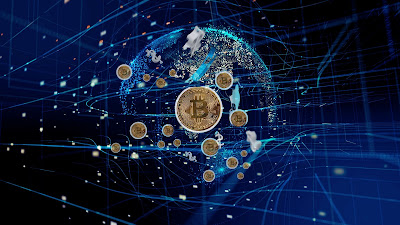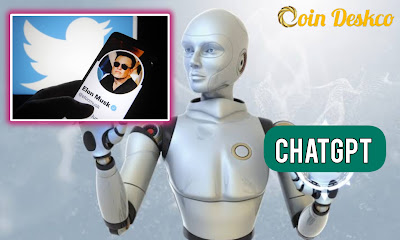Pi Network Cryptocurrency
 |
| Pi Network Listings On Exchanges |
The Pi Network uses a proof-of-work consensus algorithm, which means that users can earn Pi by contributing their computing power to the network to help validate transactions. The goal of the project is to create a decentralized, user-friendly cryptocurrency that can be easily mined by anyone, regardless of their technical expertise.
Pi Network Use Case
The idea behind Pi Network is to create a more inclusive, decentralized cryptocurrency that is accessible to everyone, regardless of their technical expertise or resources.
One potential use case for Pi Network is as a way for people to earn small amounts of cryptocurrency as a side income. Since the mining process is designed to be energy-efficient and can be done using a smartphone, it allows people to earn cryptocurrency without needing specialized hardware or a lot of technical knowledge. This could be especially useful in countries where access to traditional financial services is limited or where the local currency is unstable.
Another potential use case for Pi Network is as a way for individuals and organizations to send and receive payments in a secure and decentralized manner. Since Pi Network is built on blockchain technology, transactions are transparent, secure, and immutable, making it an ideal platform for conducting financial transactions.
Overall, the use cases for Pi Network are varied and depend on the needs and goals of the individual or organization using it.
Reading Related 》
20 OpenAI SaaS ideas you can start in 2023
Founder of Pi Network
Pi Network is a cryptocurrency project that was founded by Stanford PhDs Chengdiao Fan, Vincent McPhillip, and Nicolas Kokkalis. The project aims to build a decentralized, secure, and scalable cryptocurrency that is easily accessible and usable by anyone with a smartphone. The Pi Network was launched in 2019 and has since gained a significant following, with millions of users participating in the network and contributing to its growth and developments.
Pi Network Listings On Huobi and XT.COM Exchanges is Real?
Pi is in Encased Mainnet with no outside availability allowed.
Pi Network isn't associated with and hasn't approved any trade listings, taking note of that such two listing may not work on the genuine Pi.
More than two days, the cognizant crypto local area has seen two trades declaring and afterward posting the Pi Coin (Pi Network). Such occasions appear to be super disturbing to each Pi excavator. In any case, the Pi Network’s true channel reconfirmed that Pi is in Encased Mainnet with no outside availability allowed.
Beginning on December 26, the two trades specifically Huobi and XT.COM separately declared to circle back to Pi Network’s updates to survey Pi for listing, wherein the last option trade was more forceful by straightforwardly saying to list Pi Network on a specific day.
In this manner, on December 29, XT.COM recorded the PI/USDT pair as their earlier declaration. As per a XT.COM discharge on December 28, the posting pair was just accessible for exchange. In like manner, Huobi additionally expressed that Pi Network spot trading (PI/USDT ) was accessible for exchanging just after its declaration, saying it would be opening Pi spot trading (PI/USDT ) simultaneously.
The ongoing circumstance seems, by all accounts, to be one of the most disturbing subjects among the cognizant crypto individuals. Since the two trades, Huobi and XT.COM declared the posting PI/USDT pair, the worldwide local area has been taking their breath away. Up to this point, the crypto local area has noticed two Pi Network listings with XT.COM being the principal trade to make that move.
It is justifiable why the Pi listing draws in a ton of worry from the worldwide local area. In any case, extraordinary things tend to not be enduring. On December 30, the authority Twitter record of Pi Organization affirmed that Pi Organization isn't partnered with and hasn't approved any trade posting, taking note of that such two postings may not work on the genuine Pi.
Pi is in Encased Mainnet with no outside availability allowed. Pi Organization isn't partnered with and hasn't approved any trade posting. Such postings may not work on genuine Pi. Support might bring about misfortune. Trust just authority Pi channels.
— Pi Organization (@PiCoreTeam) December 29, 2022
The declaration in light of the new conditions has drawn in a ton of positive remarks from the local area. Head of these is that the cognizant crypto general and Trailblazers would remain protected with such a declaration.
Regardless of the way that Pi is in Encased Mainnet with no outer network allowed, the cost of Pi exchanging pair on the two trades saw no indication of a diminishing. The PI/USDT on XT.COM has expanded by 103% as of now while the figure on Huobi has become by almost 500% to $270 at the hour of composing.
Pi Network Officials Regarding Pi listing:
 |
| Pi Network Official Announcement |
It is vital to repeat that Pi is presently within the fogbound Network and isn't approved by Pi Network for listing on any exchange or for commerce, and Pi Network wasn't involved any of those putative postings or listings.
Currently, Pi Network recommends to any or all Pioneers and potential Pi users to not have interaction with any of those exchanges or third party actors as their actions aren't related with Pi Network, and will lead to substantial loss or harm to Pi users. Pi Network is additionally requesting these posts and exchange listings removed, and evaluating extra actions with relation to the third parties and exchanges. within the interim, it's vital to repeat that the group action of Pi through associate degree exchange is expressly prohibited throughout the fogbound Mainnet amount, and doing therefore would be a violation of Pi’s policies.
The distinctive innovative style of Pi’s fogbound Network amount may be a strategic option to build a network of true substance and utilities with the simplest interest of the network, the community and individual Pioneers in mind.the present fogbound Network amount of Mainnet permits Pi Network to specialize in 2 priorities: mass KYC/migration and system utilities-building. each square measure essential steps towards our final objective of building a viable system to urge prepared for Open Mainnet.
DISCLAIMER: It's important to note that the value of any cryptocurrency, including Pi, can be highly volatile and may fluctuate significantly. Investing in cryptocurrency carries significant risks, and it's important to thoroughly research and understand the risks before making any investments.







































Social Media Icons